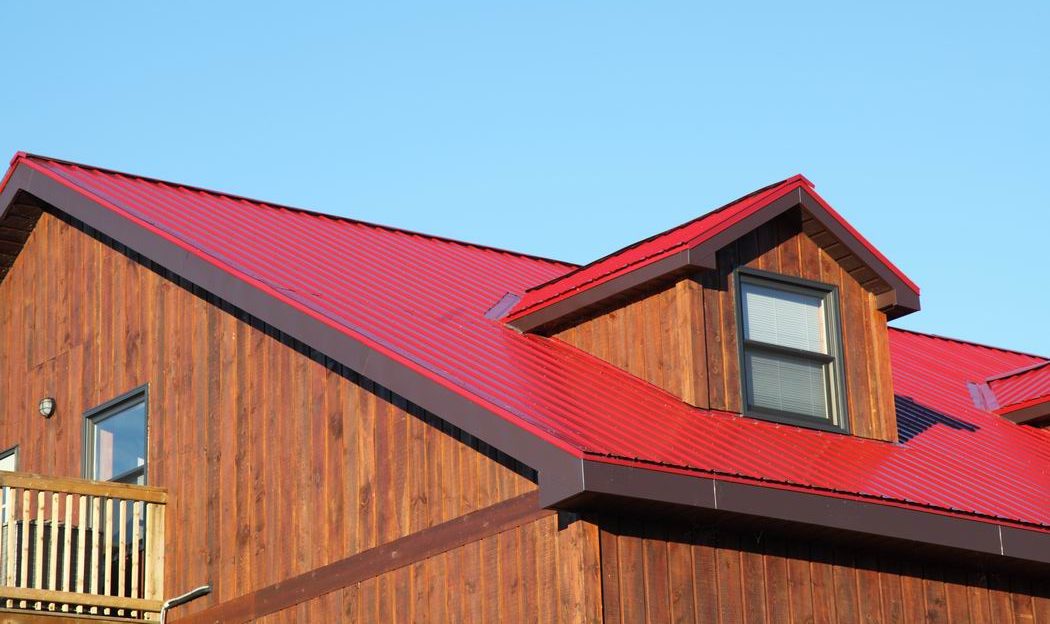What are your top 3 roofing options when in comes time for replacement?
There are more ways to put a new roof on your house than ever before. What you’ll find here is a quick overview of the three most common roofing options: asphalt, metal and tiles.
No. 1: Asphalt shingles
This is my favourite new roof choice. Today’s asphalt shingles afford lots of room for creative choice, thanks to an explosion of available colours, textures and patterns. You can still get the usual “3-tab” design, but don’t stop looking with just this type.

For slightly more money you can get shingles with irregular patterns cut along their bottom edges, creating an attractive random pattern that’s vaguely reminiscent of cedar shakes or slate.
An added benefit of this “no-tab” style of asphalt shingle is the absence of the factory-made cuts that define the 3-tab shape. In locations with lots of pine trees, these cuts can trap fallen needles that eventually rot and speed deterioration of the shingles. No cuts mean longer shingle life in locations like these.
Several manufacturers offer premium asphalt shingle patterns that are made with a single base layer, capped by a second, irregular layer that has random cut outs. This two-layer approach adds texture to your new roof by creating shadows. It looks great, especially on houses with a large, steep roof that’s visually prominent.
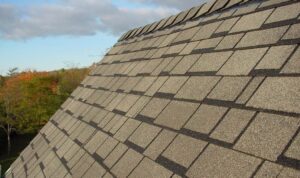
The shingles you see here are some I installed on my workshop about 10 years ago. They’re made by GAF, they have two layers with a fibreglass base, and they haven’t changed a bit in 10 years. No deterioration at all.
If your current asphalt shingling job is the very last new roof you want to put on for a while, you should consider using a super-durable product. These are made of the usual mixture of asphalt and coloured granules, but include an extra measure of fibreglass reinforcement. The best of these come with a 50-year warranty. Typical asphalt shingles have only a 20- to 25-year life span.
Will you install your own new roof?
Here’s a little trick I discovered … When the cap shingles of one roof meet the surface of another, it can be hard to get the shingles to conform properly to the shape. The heat of the sun will soften the shingles and make this happen in time, but until then a hot melt glue gun does wonders.
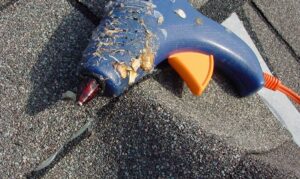
The photo here shows my hot melt gun on top of a roof after using it to glue down the cap shingle of one roof where it meets another roof.
No. 2: Metal roofing – one of your top 3 roofing options
Metal roofing materials are the chameleons of the building supply world. No other product has undergone as extensive a visual change since popular acceptance, in this case more than 50 years ago.
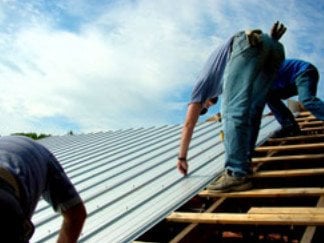
Metal roofing used to be available in nothing more than dull, grey sheets of steel. Now you can get them in colourful, durable, factory-applied finishes, look-alike textures and attractive coatings. You can also get sheets of metal roofing, for instance, that look like clay tile, but go up fast and can be supported by any standard roof structure. Products that include fine stone chips bonded to steel look something like shakes or slate, but go on more quickly and boast warranties as long as 50 years.
The main thing about metal roofing isn’t how long the metal will last. Long life here is a given. What really matters is how long the finish will last. Ask about the length of finish warranty while you’re shopping around. It’s not much good to have a metal roof that lasts half a century if the finish looks terrible after 15 years.
No. 3: Roofing tiles
For centuries people have kept the rain off their heads with an interlocking network of baked clay tiles. Modern versions of this European roofing style are now also made of coloured concrete, offering greater strength, solidity and long life spans, plus all the same good looks as traditional clay. Concrete tiles are also available in a shape that mimics slate and cedar shakes, if you prefer.
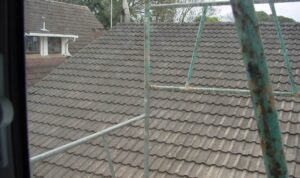
Concrete tile roofing products are solid and impressive, but they can’t be safely supported by all roof structures. They’re heavy.
Before you get too far into the planning process, go into your attic (or hire someone to go there) and measure the length, width and spacing of the angled wood members called rafters, or photograph the triangular pattern of wood members that form the trusses, if that’s what you find there.
With this information, a concrete roofing tile sales rep will tell you if this product is suitable for your home.
Weight is the issue. Many roofs can’t take the weight of clay or concrete tiles without reinforcements that could add thousands of dollars to a roofing job.
There are certainly other roofing options out there besides these three, but asphalt, tiles or metal are the three most common choices.
Even if you intend to have a professional install your new roof (and most people do), visit a building supply yard to educate yourself about the possibilities and material costs. The more you know ahead of time, the better you’ll be able to judge tradespeople looking to do work for you.
VIDEO: Steve Maxwell shares his choice for a top-quality, inexpensive roof choice
Understanding roofer lingo
Here’s a short list of word definitions that will give you a fighting chance when confronted by roofing professionals who start throwing around trade jargon as you explore your top 3 roofing options.
Square: A unit of roof area equal to 100 square feet.
Valley: The trough-like intersection point between two adjoining roof lines. For example: The intersection point between a dormer and a main roof is a valley.
Peak: Just as it sounds. The pointy bit at the top of an angled roof.
Fascia: The vertical face that surrounds the edges of a peaked roof, usually covered in aluminum.
Soffit: The horizontal surface that exists under a roof overhang.
Drip edge: An aluminum or steel strip that surrounds the perimeter of a roof and keeps moisture from seeping under roofing materials and damaging the roof structure.
Organic shingles: An older type of asphalt shingle made with tar, fine gravel and heavy paper.
Fibreglass shingles: Looks like an organic shingle, but made with fibreglass mat, not heavy paper.
